Geography - 5 themes of georaphy
Download as PPTX, PDF12 likes563 views
Physical geography is the branch of geography dealing with natural features and processes of the Earth's surface, while human geography is concerned with how human activity affects or is influenced by the Earth. The Five Themes of Geography used to study Earth's features are location, place, human-environment interaction, movement, and region, and include concepts such as describing locations, understanding regions, examining how humans interact with environments, analyzing how people and goods move between places, and identifying what makes places unique.
1 of 22
Downloaded 24 times
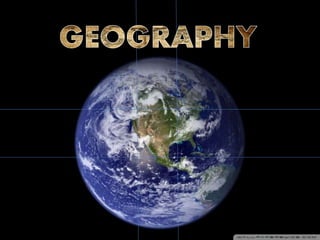
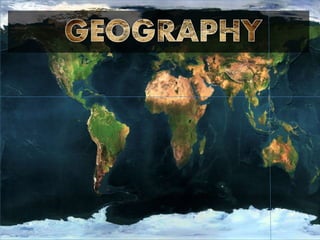
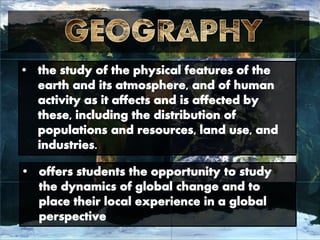

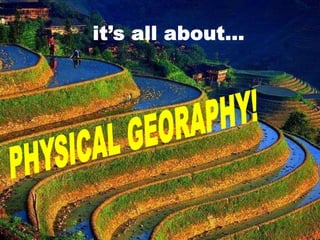
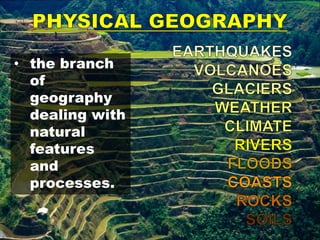

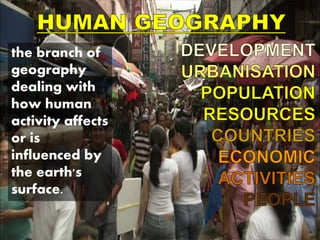

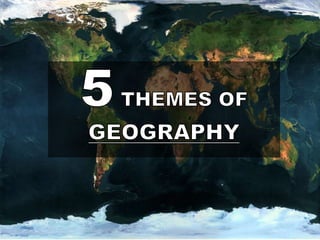
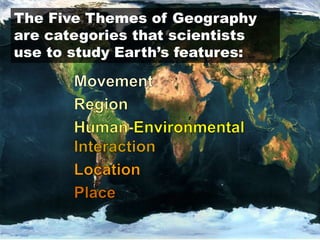

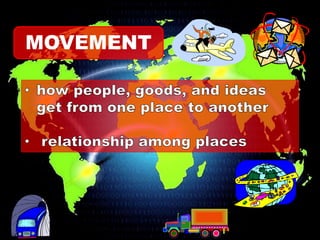

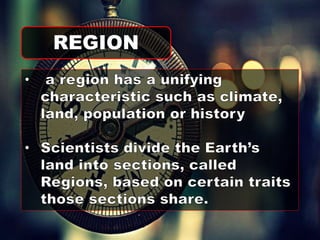
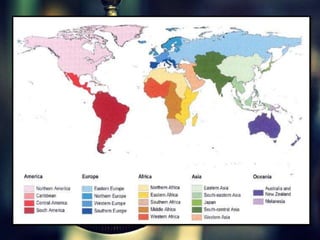
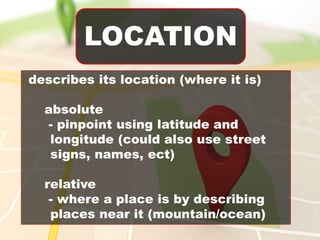
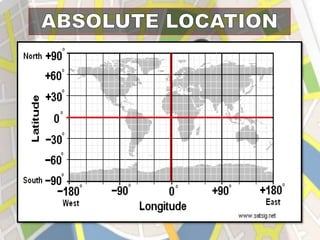
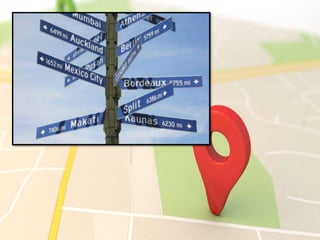
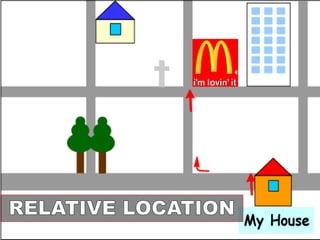
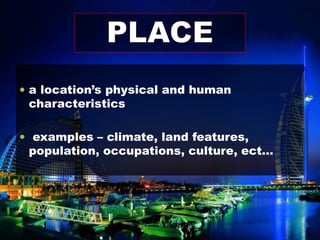

More Related Content
What's hot (20)
Viewers also liked (11)
Ad
More from Toby Gallibu (15)
Ad
Recently uploaded (20)
PDF
BÃI TᚎP Báŧ TRáŧĒ TIášūNG ANH 8 - GLOBAL SUCCESS - CášĒ NÄM - NÄM 2024 (VOCABULARY, ...Nguyen Thanh Tu CollectionĖý
PDF
LAW OF CONTRACT ( 5 YEAR LLB & UNITARY LLB)- MODULE-3 - LEARN THROUGH PICTUREAPARNA T SHAIL KUMARĖý
BÃI TᚎP Báŧ TRáŧĒ TIášūNG ANH 8 - GLOBAL SUCCESS - CášĒ NÄM - NÄM 2024 (VOCABULARY, ...Nguyen Thanh Tu Collection
Ėý
Geography - 5 themes of georaphy
- 6. âĒ the branch of geography dealing with natural features and processes.
- 8. the branch of geography dealing with how human activity affects or is influenced by the earth's surface.
- 11. The Five Themes of Geography are categories that scientists use to study Earthâs features:
- 13. MOVEMENT
- 14. How are people, goods, information and ideas moved from place to place?
- 15. REGION
- 17. LOCATION describes its location (where it is) absolute - pinpoint using latitude and longitude (could also use street signs, names, ect) relative - where a place is by describing places near it (mountain/ocean)
- 21. ï a locationâs physical and human characteristics ï examples â climate, land features, population, occupations, culture, ectâĶ
